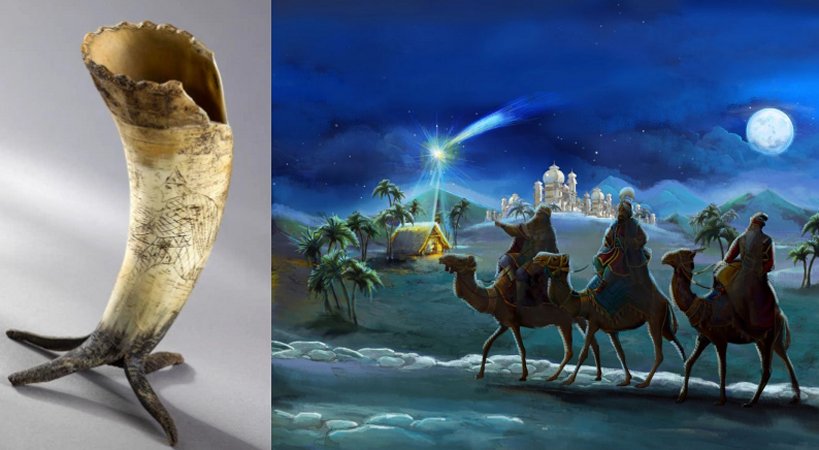How Did Vikings Celebrate Yule – The Winter Solstice?
Ellen Lloyd - AncientPages.com - Did you know that Nordic people celebrated a festival similar to Christmas long before they became Christian? Of course, Norse Yule was not the same as our Christmas festival, but there are many similarities between these two traditions.
This is simply because most enduring Christmas traditions grew from adapting existing pagan rituals, and reframing them with Christian concepts and practices.
Yule Was A Pagan Midwinter Festival
To Vikings, Yule was the most important festival of the year, and they certainly celebrated it all they could. When the cold and dark winter approached, Vikings knew it was time to be with friends and family and enjoy delicious food and drinks. Raids and plundering were no longer on the schedule.
We celebrate Christmas to remember the birth of Jesus Christ, who Christians believe is the Son of God. The name 'Christmas' comes from the Mass of Christ (or Jesus), but the Vikings' Yule was a festival to honor Norse Gods, especially Odin, also known as Júlfadr, the Yule father. This is also why Odin has been compared to Father Christmas, Santa Claus, and Grandfather Frost.
"The Old Norse word Jól was used to describe a feast, and Jólablót was a midwinter festival associated with the rebirth of the Sun. Blót or blot does not mean blood as many believe but means ritual sacrifice or worship. The verb blóta meant "to worship with sacrifice" or "to strengthen."
In Old Norse poetry, the word Jól was often used as a synonym for 'feast', such as in the kenning Hugins jól, meaning "Huginn's Yule" (Hugin is one of Odin's ravens)." 1
Yule comes from a 12-day midwinter festival celebrated by Germanic peoples. In the northern hemisphere, the Yule festival is around December 21. Keeping in mind that the winter solstice is the shortest day of the year, one can easily understand why this festival was so important to people living in Northern parts of Europe. During this period of the year, the Sun can be seen for only a few hours. In some parts of the north, it can barely be seen at all.
Illustration of an ancient Nordic Yule festival (Die Gartenlaube, 1880). Credit: Public Domain
If you think it's dark where you live, consider the polar night you can experience in Kiruna, Sweden. Some think it's a magical experience, but many think it's a depressing time. This period, called Midwinter, lasts for about 25 days from December 12. During this time, it's dark, and there is no Sun at all. Being without the Sun for so many days can be challenging, but people living in these regions are used to it.
We find the oldest written source of the Viking Yule celebrations in Hrafnsmál, which means "raven speech" in Old Norse. This poem was composed around the 9th century by the Norwegian skald Þorbjörn Hornklofi. Hrafnsmál is mainly about a conversation between an unnamed Valkyrie and a raven, who discuss the life and martial deeds of Harald Fairhair.
There Are Many Similarities Between Yule And Christmas
According to Icelandic sagas, Vikings celebrated Yule for three days. They invited neighbors and friends, and everyone brought something to eat and drink. People gathered at the long Yule table, where you could find meat, bread, beer, stockfish, fruits, and vegetables. Everyone was welcomed to celebrate Yule, and Vikings always enjoyed it when a stranger showed up because he could tell interesting stories from foreign lands. After all, such stories were important to Vikings, who needed to keep up to date with what was happening worldwide. Storytelling, songs, and games were popular entertainment.
Did you know? - Drinking horns reveal a link between the Yule festival and what we today know as Christmas. Learn more
The Vikings had their Yule tree, which inspired the later Christmas tree. The Yule tree was a pagan symbol of the tree of life; in the case of the Vikings, it was a reflection of Yggdrasil, the Norse tree of life. During winter, when the days are dark and cold, green plants and trees remind us that the Sun will return, and we may embrace warmer days eventually. Vikings believed spirits known as vættir (vättar in Swedish) lived in trees. They didn't want these small creatures to freeze during winter, so they took the trees inside, letting the spirits enjoy a warm and cozy atmosphere at home.
The green tree was often decorated with small statues of their Norse gods, food, and clothes. They attempted to call for the spirit of the forests.
In many modern Swedish households, a Yule goat stands close to the Christmas tree. The Yule goat is a Scandinavian Christmas tradition based on Norse legends and worship of God Thor.
God Thor was said to ride a flying chariot drawn by two goats in some Norse myths.
It was believed that the goats Tanngrisnir ("Gap-tooth") and Tanngnjóstr ("Tooth-grinder"), who pulled Thor's chariot, provided food for the god and his friends.
The Yule Goat is one of the oldest Scandinavian Yule symbols and traditions. Here we see it depicted on a Christmas card with "Merry Christmas" wishes. Illustration made by the Swedish artist Jenny Nyström. Credit: Public Domain
In ancient times, people in Sweden believed that the Yule Goat was an invisible spirit that would appear before Christmas to check if the Christmas preparations had been done correctly.
Traditional Christmas food in Sweden. Vikings ate almost the same during the Yule celebration. Credit: Public Domain
There was a time when the Yule Goat was considered a demonic and frightening creature that roamed the countryside on the night of December 25, demanding food and frightening devout Christians. This changed with time, and the Yule Goat became a beloved being worshipped all across Scandinavia.
See also: More about Christmas Traditions
Viking also had a Yule log that was a long oak with fir. They gathered around it and carved runes on the oak, wishing for the gods' protection.
As you can see, Yule was basically about the same things as Christmas. It was a time we associate with family, friends, festivities, and the return of light when we can finally embrace warmer days.
Also, we give presents during Christmas, so why not keep in mind what Norse people thought about gift giving?
Gifts don't need
To be extravagant
A little praise is often enough
Sharing food
And something to drink
Has secured many friendships
HÁVAMÁL - verse 52
Updated on December 10, 2023
Written by Ellen Lloyd - AncientPages.com
Copyright © AncientPages.com All rights reserved. This material may not be published, broadcast, rewritten or redistributed in whole or part without the express written permission of AncientPages.com
Expand for referencesMore From Ancient Pages
-
 Mysterious Ancient Lost Civilization Of North America Had Interest In One Particular Constellation
Civilizations | Apr 17, 2018
Mysterious Ancient Lost Civilization Of North America Had Interest In One Particular Constellation
Civilizations | Apr 17, 2018 -
 How Did St. Nicholas Become Santa Claus? – History, Legend And Tradition
Featured Stories | Dec 22, 2023
How Did St. Nicholas Become Santa Claus? – History, Legend And Tradition
Featured Stories | Dec 22, 2023 -
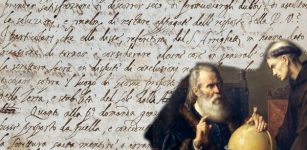 Galileo Galilei’ Long-Lost Letter Reveals His Attempt To Fool The Inquisition And Make Science Independent From Religion
Archaeology | Sep 22, 2018
Galileo Galilei’ Long-Lost Letter Reveals His Attempt To Fool The Inquisition And Make Science Independent From Religion
Archaeology | Sep 22, 2018 -
 Lost Villa Of First Roman Emperor Augustus Found At Somma Vesuviana In Southern Italy
Archaeology | Apr 19, 2024
Lost Villa Of First Roman Emperor Augustus Found At Somma Vesuviana In Southern Italy
Archaeology | Apr 19, 2024 -
 Unexplained Teleportation Cases Of People – Ancient Times – Part 1
Featured Stories | Sep 30, 2019
Unexplained Teleportation Cases Of People – Ancient Times – Part 1
Featured Stories | Sep 30, 2019 -
 Legendary Minamoto No Tametomo – First Samurai To Commit Seppuku
Ancient History Facts | Aug 7, 2023
Legendary Minamoto No Tametomo – First Samurai To Commit Seppuku
Ancient History Facts | Aug 7, 2023 -
 Extremely Rare And Tiny Medieval Sundial Discovered In Germany
Archaeology | Jul 31, 2023
Extremely Rare And Tiny Medieval Sundial Discovered In Germany
Archaeology | Jul 31, 2023 -
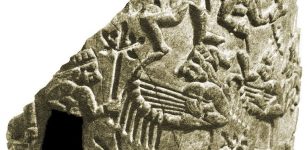 Lugal-Anne-Mundu: ‘King Of The Universe’ And Powerful Leader Who Restored Sumer To Its Former Glory
Civilizations | Oct 1, 2016
Lugal-Anne-Mundu: ‘King Of The Universe’ And Powerful Leader Who Restored Sumer To Its Former Glory
Civilizations | Oct 1, 2016 -
 Well-Preserved Fragments Of Epetion’s Wall Discovered At The Hellenistic Site Of Stobreč, Near Split, Croatia
Archaeology | Oct 11, 2024
Well-Preserved Fragments Of Epetion’s Wall Discovered At The Hellenistic Site Of Stobreč, Near Split, Croatia
Archaeology | Oct 11, 2024 -
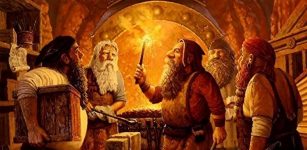 Brokkr And Eitri – Norse Dwarves Who Fashioned Magical Artifacts For The Gods
Featured Stories | Aug 19, 2019
Brokkr And Eitri – Norse Dwarves Who Fashioned Magical Artifacts For The Gods
Featured Stories | Aug 19, 2019 -
 Jason And The Argonauts – Hate, Sorcery, Love And Jealousy Reign In This Famous Greek Story
Featured Stories | Jan 6, 2022
Jason And The Argonauts – Hate, Sorcery, Love And Jealousy Reign In This Famous Greek Story
Featured Stories | Jan 6, 2022 -
 10 Ancient Chinese Musical Instruments You Didn’t Know About
Featured Stories | Jan 20, 2016
10 Ancient Chinese Musical Instruments You Didn’t Know About
Featured Stories | Jan 20, 2016 -
 Wilhelm Tell: Famous Legendary Crossbowman And Swiss Patriot – Symbol Of Freedom And Dignity
Featured Stories | Nov 2, 2016
Wilhelm Tell: Famous Legendary Crossbowman And Swiss Patriot – Symbol Of Freedom And Dignity
Featured Stories | Nov 2, 2016 -
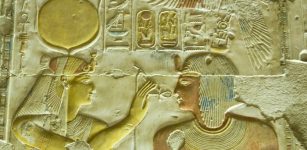 Hathor – One Of Ancient Egypt’s Greatest Female Deities
Egyptian Mythology | Jun 16, 2021
Hathor – One Of Ancient Egypt’s Greatest Female Deities
Egyptian Mythology | Jun 16, 2021 -
 19 Cannons Shot From British Ships During The American Revolution Discovered In Savannah River
Archaeology | Apr 29, 2022
19 Cannons Shot From British Ships During The American Revolution Discovered In Savannah River
Archaeology | Apr 29, 2022 -
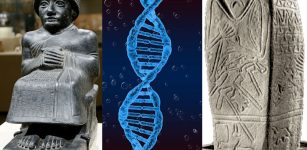 Ancient DNA Provides Comprehensive Genomic History Of The “Cradle Of Civilization”
Archaeology | Oct 10, 2022
Ancient DNA Provides Comprehensive Genomic History Of The “Cradle Of Civilization”
Archaeology | Oct 10, 2022 -
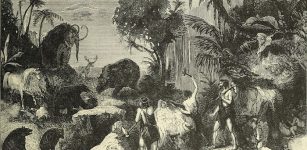 Ancient Human Feeding Behavior Studied By Scientists
Archaeology | Jan 18, 2022
Ancient Human Feeding Behavior Studied By Scientists
Archaeology | Jan 18, 2022 -
 Fascinating Medieval Knight Armor History
Featured Stories | Oct 23, 2018
Fascinating Medieval Knight Armor History
Featured Stories | Oct 23, 2018 -
 Home Of Jesus’ Apostles Found In The Lost Biblical Town Bethsaida
Archaeology | Aug 10, 2017
Home Of Jesus’ Apostles Found In The Lost Biblical Town Bethsaida
Archaeology | Aug 10, 2017 -
 Why Did Modern Humans Replace The Neanderthals? The Key Might Lie In Our Social Structures
Featured Stories | Jun 18, 2024
Why Did Modern Humans Replace The Neanderthals? The Key Might Lie In Our Social Structures
Featured Stories | Jun 18, 2024



